- All Singaporean households will receive $500 in CDC vouchers starting May 13, 2025
- The vouchers will be valid until December 31, 2025
- $250 can be used at supermarkets and $250 at hawker stalls and heartland merchants
- This is the seventh tranche of CDC vouchers, announced during Budget 2025 by PM Lawrence Wong
- Another $300 in vouchers will be issued in January 2026
- The previous tranche of $300 vouchers issued in January 2025 has already been claimed by about 97% of eligible households (1.28 million out of 1.33 million)
- Nearly $300 million has been spent from those January vouchers so far
The authorities are warning people to be careful when claiming the vouchers. They note that legitimate sources will never ask for bank login details, money transfers, or the installation of apps from unofficial sources. Anyone with concerns about potential scams can call the ScamShield Helpline at 1799.
These vouchers continue a program that began during the COVID-19 pandemic and has been maintained to help households with rising costs.
CDC Voucher Scheme Details
The Community Development Council (CDC) voucher scheme is part of Singapore’s broader financial assistance programs. Here’s a detailed breakdown:
CDC Voucher Scheme
Purpose: Initially launched during the COVID-19 pandemic to help Singaporean households with daily expenses while supporting local businesses.
Current Structure:
- Every Singaporean household receives vouchers (most recent $500 in May 2025)
- Split usage: 50% for supermarkets and 50% for hawker stalls and heartland merchants
- Distributed digitally through the RedeemSG platform
- Generally valid until the end of the calendar year issued
Evolution:
- Started as pandemic relief
- Continued to help offset rising costs of living
- Has become a regular disbursement in recent years
Similar MOF Financial Assistance Schemes
GST Voucher Scheme
- Permanent scheme to help lower- and middle-income Singaporeans with GST expenses
- Three components:
- Cash: Direct payments to eligible adult Singaporeans (income-tested)
- MediSave: Top-ups for elderly Singaporeans
- U-Save: Utility rebates for HDB households
Assurance Package
- Introduced to offset the GST increase from 7% to 9%
- Components include cash payouts, CDC vouchers, MediSave top-ups, and additional U-Save rebates
- Targeted at helping Singaporeans manage the transition to higher GST rates
SG Bonus
- Occasional one-off payments when the government has budget surpluses
- Distributed to all adult Singaporeans, with lower-income citizens receiving more significant amounts
Workfare Income Supplement (WIS)
- Income supplement for lower-wage Singaporean workers
- Provides cash payments and CPF top-ups
- Aims to encourage employment while supplementing income
ComCare
- Comprehensive social safety net for low-income households
- Provides short-to-medium term financial assistance
- Includes assistance for daily necessities, medical needs, and school expenses
Pioneer and Merdeka Generation Packages
- Special benefits for seniors from specific generations
- Includes healthcare subsidies, MediSave top-ups, and discounts on various services
These schemes collectively form Singapore’s approach to providing targeted financial assistance while encouraging self-reliance. The CDC voucher scheme specifically stands out for its dual purpose of supporting both households and local businesses.
CDC Voucher Scheme in Detail
Overview and Evolution
The Community Development Council (CDC) Voucher Scheme began as a pandemic relief measure and has evolved into a regular financial support program for Singaporean households. It serves the dual purpose of helping residents with daily expenses while supporting local businesses, particularly hawkers and heartland merchants.
Eligibility and Distribution
- Eligible recipients: All Singaporean households (one claim per household)
- Distribution method: Digital vouchers accessed through the RedeemSG platform
- Claiming process:
- One household representative (aged 21 and above) claims on behalf of the household
- Access through Singpass
- Digital vouchers can be printed or shown on mobile devices for spending.
Current Structure (2025)
- May 2025 tranche: $500 per household
- $250 for supermarkets
- $250 for hawker stalls and heartland merchants
- Validity period: Until December 31, 2025
- Upcoming tranche: Additional $300 in January 2026
Historical Progression
- First tranche: Introduced during COVID-19 pandemic
- Second to sixth tranches: Continued to help with rising costs of living
- Seventh tranche: Current May 2025 disbursement of $500
- The scheme has been gradually institutionalized as a regular feature of Singapore’s social support system
Usage and Merchant Network
- Participating merchants:
- Heartland businesses and hawker stalls displaying CDC voucher decals
- Major supermarket chains
- Cannot be used at online stores or for online purchases
- Transaction process:
- Scan merchant’s QR code or let the merchant scan voucher’s QR code
- No change given for partial use of voucher value
- No cash redemption of vouchers
Security Features
- Government warnings against phishing attempts
- Legitimate voucher claims never require:
- Bank login details
- Money transfers
- Installation of apps from unofficial sources
- ScamShield Helpline (1799) available for verification
Administration
- Managed by the five Community Development Councils in partnership with the Ministry of Finance
- Merchants receive reimbursement for vouchers accepted
Impact and Utilization
- High redemption rates (approximately 97% for the January 2025 tranche)
- Significant economic impact (nearly $300 million spent from January 2025 vouchers)
- Widespread merchant participation across neighborhoods
The CDC Voucher Scheme represents a significant component of Singapore’s approach to providing financial assistance while supporting local commerce and community resilience.
The Singapore Police Force has issued an advisory about scams involving fake websites and infographics related to government payouts, specifically:
Community Development Council (CDC) Vouchers
Assurance Package (AP) Cash
Goods and Services Tax Voucher (GSTV) – Cash
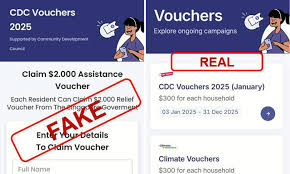
How the scams operate:
Fake Instagram accounts share infographics with links to counterfeit RedeemSG websites
Telegram messages containing fake Budget 2025 infographics supposedly from the Ministry of Finance
These lead to phishing links where victims are asked to provide personal information, banking details, and credentials
Official guidance for claiming legitimate benefits:
CDC Vouchers: Only one household member needs to claim via Singpass at go.gov.sg/cdcv. The household will receive a unique CDC Voucher link via SMS from “gov.sg”
Cash payouts like AP Cash: No action is required as these are automatically paid to eligible citizens via PayNow-NRIC, bank accounts, or GovCash

Legitimate sources of information:
CDC Vouchers: vouchers.cdc.gov.sg
AP Cash or GSTV – Cash: govbenefits.gov.sg
Official MOF social media platforms (Facebook, Instagram, Threads, TikTok, LinkedIn, X)
Protection advice (ADD-CHECK-TELL):
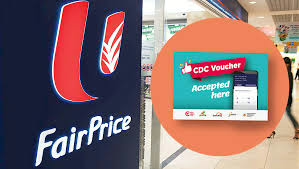
ADD:
Install the ScamShield app to block suspicious SMSs
Set up security features like transaction limits and 2FA
Use your bank’s Money Lock feature to protect savings
CHECK:
Verify link authenticity
Look for “.gov.sg” in government website URLs
Use the ScamShield app or website to check suspicious messages
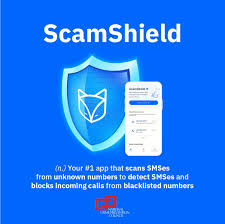
TELL:
Report scams to authorities, family and friends
Contact your bank immediately if you think you’ve been scammed
Call the 24/7 ScamShield Helpline at 1799

The advisory emphasizes that fighting scams is a community effort and encourages everyone to ACT Against Scams to protect the community.
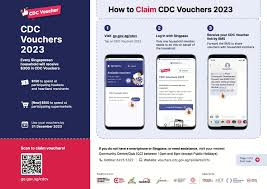
Analysis of CDC Voucher Scams in Singapore
Nature of CDC Voucher Scams
The Community Development Council (CDC) Vouchers scheme in Singapore has become a target for scammers who create:
- Fake Instagram accounts with infographics promoting counterfeit RedeemSG website links
- Phishing websites that mimic the legitimate CDC Voucher redemption portal
- Fraudulent messages that prompt users to disclose personal and banking information
These scams exploit the popularity of the CDC Voucher program, which provides financial assistance to Singaporean households.

Key Prevention Methods
For Individuals
- Verify the Correct Redemption Process:
- Only one household member should claim vouchers through Singpass at the official site: go.gov.sg/cdcv
- Legitimate voucher links arrive via SMS from “gov.sg” and can be shared with family members
- No banking details or credentials are ever required to claim CDC Vouchers
- Check Website Authenticity:
- The only official CDC Voucher website is vouchers.cdc.gov.sg
- Look for the “.gov.sg” domain in the URL, which indicates a legitimate government website
- Be suspicious of any website that looks like a government site but lacks the “.gov.sg” domain
- Use Digital Security Tools:
- Install the ScamShield app to filter out scam messages
- Verify suspicious links using ScamShield (www.scamshield.gov.sg)
- Call the 24/7 ScamShield Helpline at 1799 when in doubt
- Practice General Scam Prevention:
- Never click on links from unknown sources
- Set up transaction limits for internet banking
- Enable Two-Factor Authentication (2FA) for sensitive accounts
- Consider using your bank’s Money Lock feature to protect savings
For Community Organizations
- Education Campaigns: Community centers and neighborhood committees can conduct awareness sessions, particularly targeting elderly residents who may be less digitally savvy
- Reporting Mechanisms: Establish clear channels for reporting suspicious activities related to CDC Vouchers
- Local Monitoring: Community volunteers can help monitor for scam activities within neighborhoods
Singapore-Specific Context
These prevention methods are particularly relevant to Singapore because:
- Singapore has a high digital adoption rate, making online scams particularly effective
- The CDC Voucher scheme is widely used across all segments of society
- Singapore’s multi-ethnic, multi-lingual population requires tailored communication strategies
- The tight-knit community structure allows for practical neighborhood-level prevention efforts

Implementation Strategy
For effective implementation in Singapore’s context:
- Leverage Community Networks: Work through Residents’ Committees (RCs), Community Clubs (CCs), and Family Service Centers (FSCs)
- Multi-language Communications: Ensure advisory messages are available in all four official languages (English, Mandarin, Malay, Tamil)
- Target Vulnerable Groups: Focus special attention on elderly residents and recent immigrants who may be less familiar with government digital services
- Public-Private Partnership: Collaborate with local businesses that accept CDC Vouchers to display scam awareness materials
By combining technical safeguards with community-based prevention approaches, Singapore can significantly reduce the impact of CDC Voucher scams across its population.
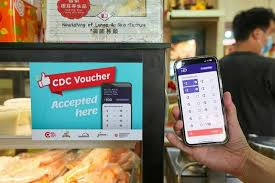
Maxthon
Maxthon has set out on an ambitious journey aimed at significantly bolstering the security of web applications, fueled by a resolute commitment to safeguarding users and their confidential data. At the heart of this initiative lies a collection of sophisticated encryption protocols, which act as a robust barrier for the information exchanged between individuals and various online services. Every interaction—be it the sharing of passwords or personal information—is protected within these encrypted channels, effectively preventing unauthorised access attempts from intruders.
 This meticulous emphasis on encryption marks merely the initial phase of Maxthon’s extensive security framework. Acknowledging that cyber threats are constantly evolving, Maxthon adopts a forward-thinking approach to user protection. The browser is engineered to adapt to emerging challenges, incorporating regular updates that promptly address any vulnerabilities that may surface. Users are strongly encouraged to activate automatic updates as part of their cybersecurity regimen, ensuring they can seamlessly take advantage of the latest fixes without any hassle.In today’s rapidly changing digital environment, Maxthon’s unwavering commitment to ongoing security enhancement signifies not only its responsibility toward users but also its firm dedication to nurturing trust in online engagements. With each new update rolled out, users can navigate the web with peace of mind, assured that their information is continuously safeguarded against ever-emerging threats lurking in cyberspace.
This meticulous emphasis on encryption marks merely the initial phase of Maxthon’s extensive security framework. Acknowledging that cyber threats are constantly evolving, Maxthon adopts a forward-thinking approach to user protection. The browser is engineered to adapt to emerging challenges, incorporating regular updates that promptly address any vulnerabilities that may surface. Users are strongly encouraged to activate automatic updates as part of their cybersecurity regimen, ensuring they can seamlessly take advantage of the latest fixes without any hassle.In today’s rapidly changing digital environment, Maxthon’s unwavering commitment to ongoing security enhancement signifies not only its responsibility toward users but also its firm dedication to nurturing trust in online engagements. With each new update rolled out, users can navigate the web with peace of mind, assured that their information is continuously safeguarded against ever-emerging threats lurking in cyberspace.
Maxthon’s unwavering commitment to ongoing security enhancement signifies not only its responsibility toward users but also its firm dedication to nurturing trust in online engagements. With each new update rolled out, users can navigate the web with peace of mind, assured that their information is continuously safeguarded against ever-emerging threats lurking in cyberspace.
